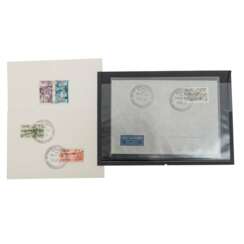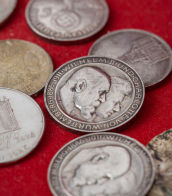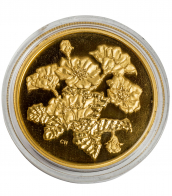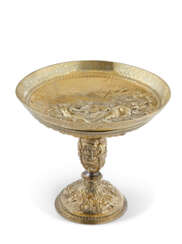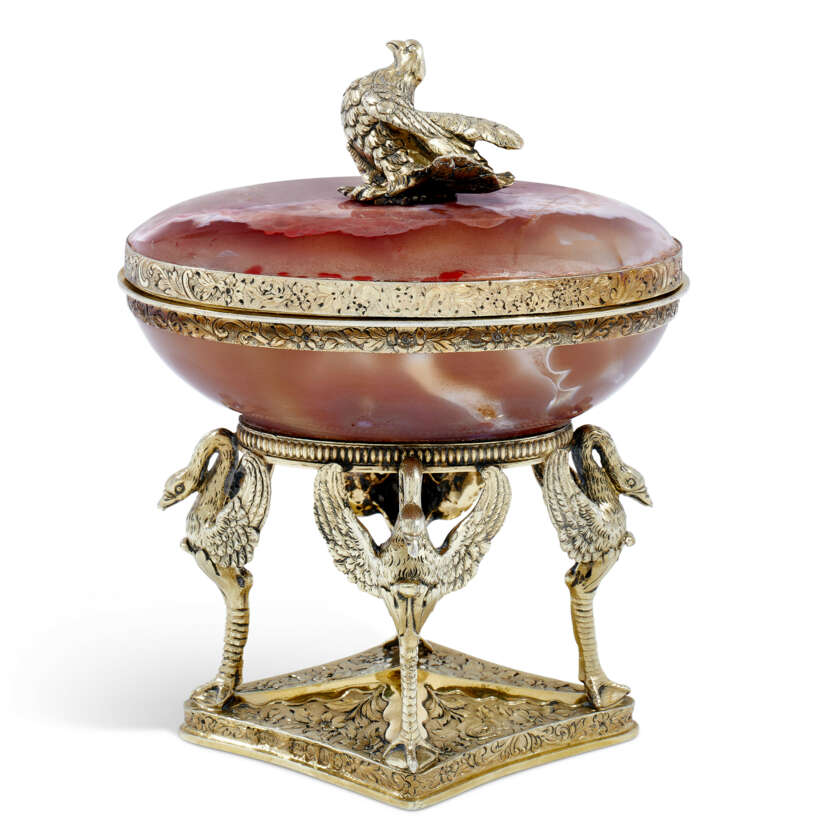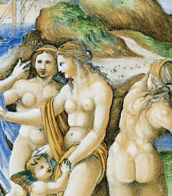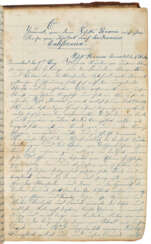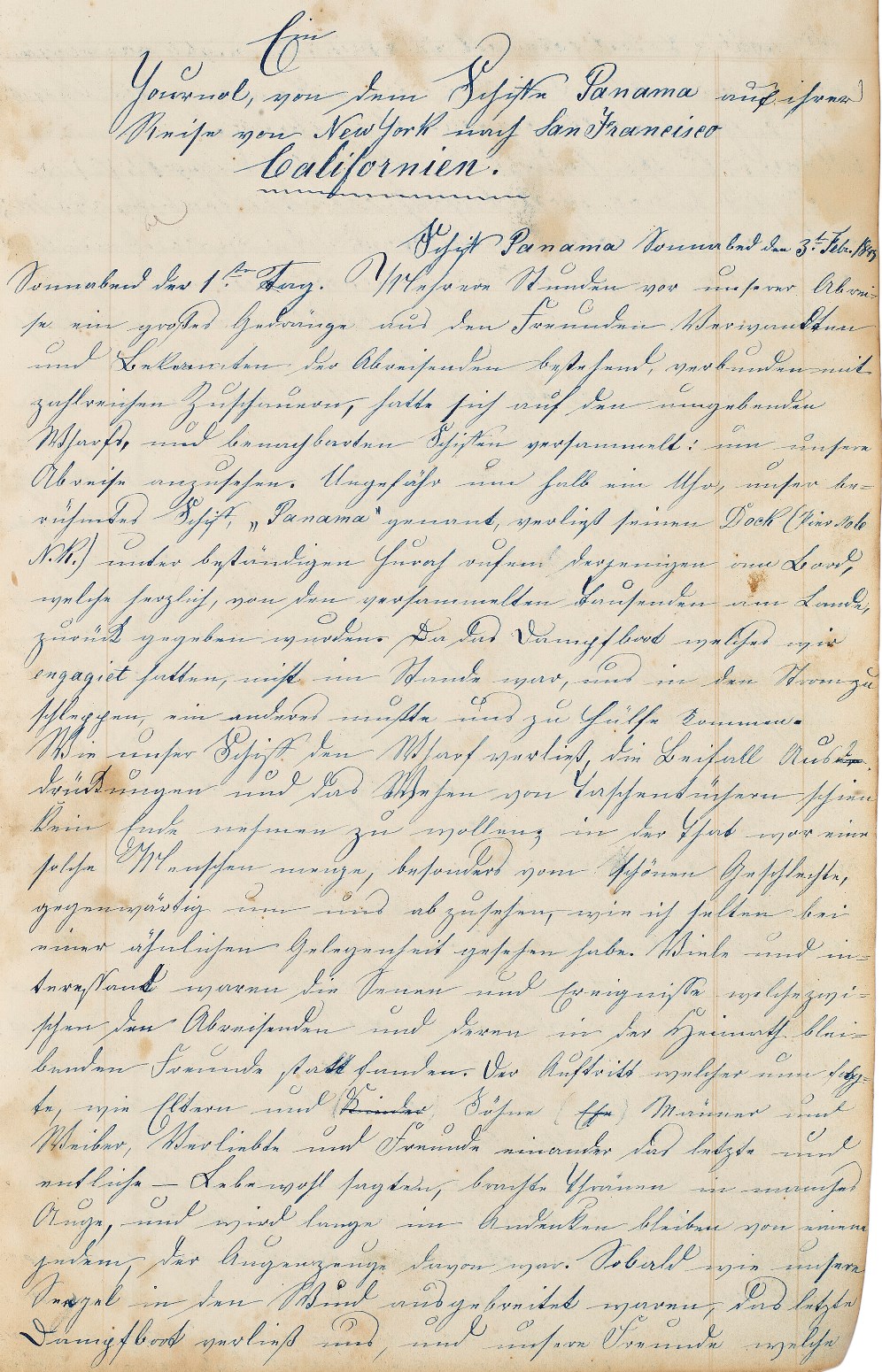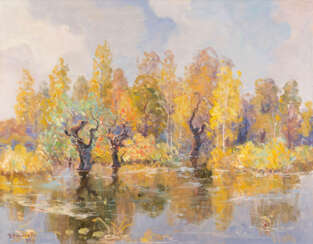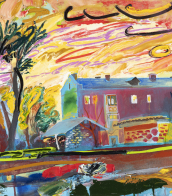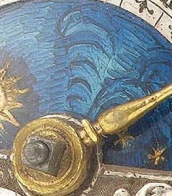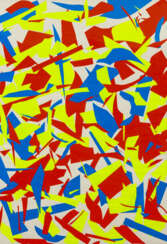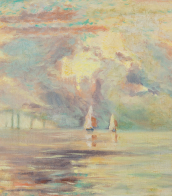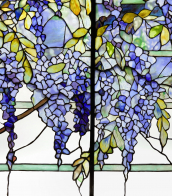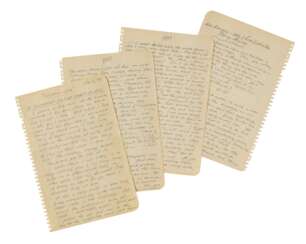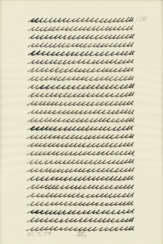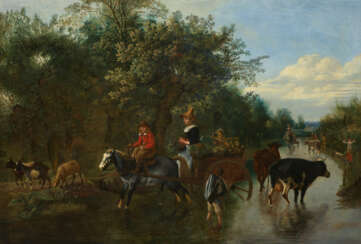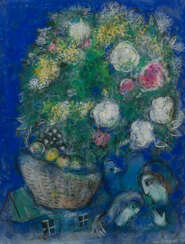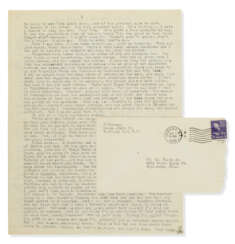mark flood
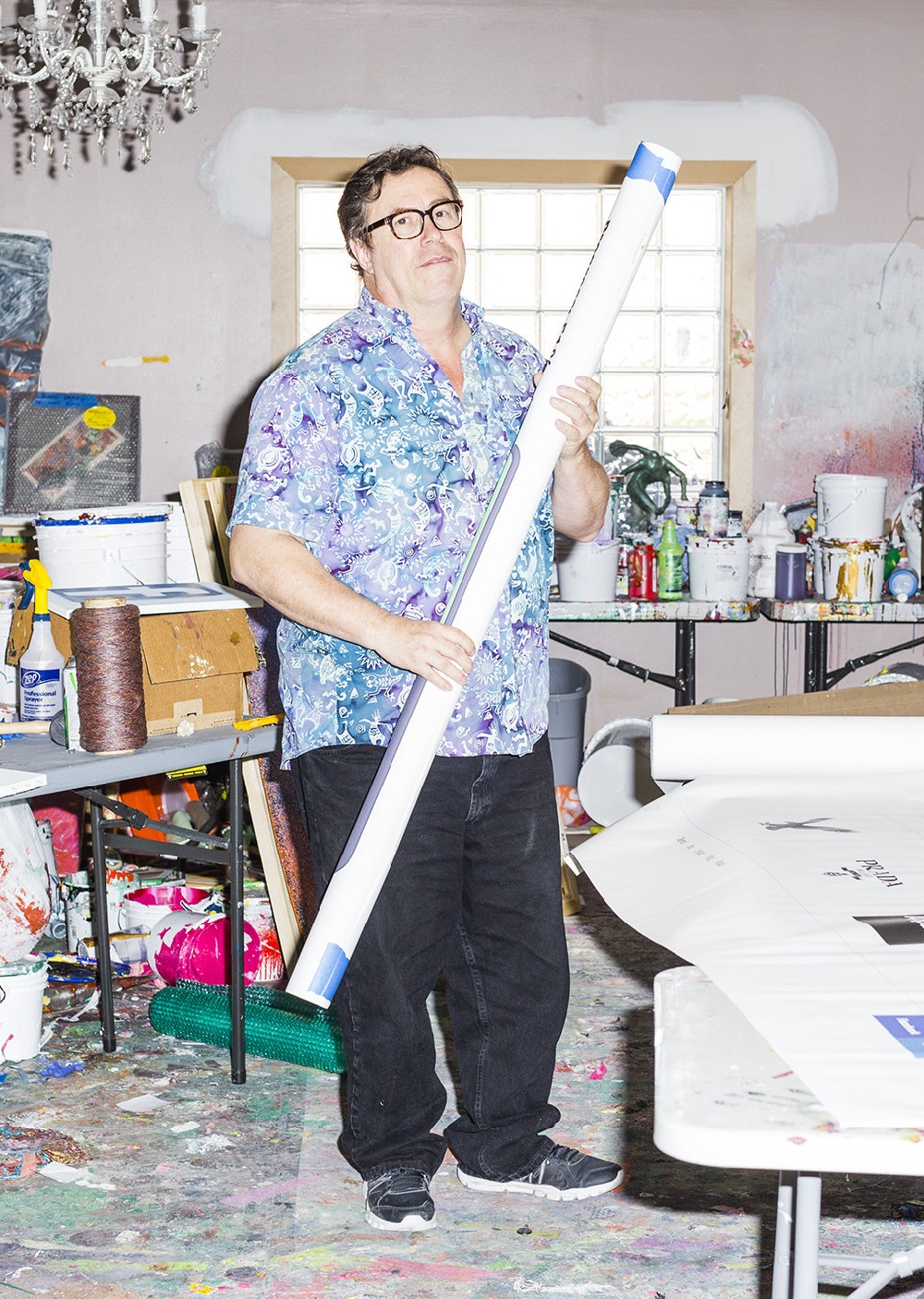
Mark Flood is an American artist.
Flood has worked in several media and formats such as painting, installation, artist's books and photo-collage. His paintings created with lace have been called "spinster abstraction". The process involves collecting lace and shredding it, soaking the lace in paint, and then draping it over a painted canvas. A pattern is left on the canvas after removing the lace.
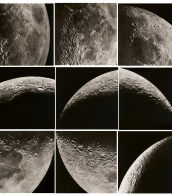

Mark Flood is an American artist.
Flood has worked in several media and formats such as painting, installation, artist's books and photo-collage. His paintings created with lace have been called "spinster abstraction". The process involves collecting lace and shredding it, soaking the lace in paint, and then draping it over a painted canvas. A pattern is left on the canvas after removing the lace.


Mark Flood is an American artist.
Flood has worked in several media and formats such as painting, installation, artist's books and photo-collage. His paintings created with lace have been called "spinster abstraction". The process involves collecting lace and shredding it, soaking the lace in paint, and then draping it over a painted canvas. A pattern is left on the canvas after removing the lace.
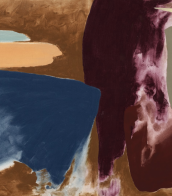

Mark Flood is an American artist.
Flood has worked in several media and formats such as painting, installation, artist's books and photo-collage. His paintings created with lace have been called "spinster abstraction". The process involves collecting lace and shredding it, soaking the lace in paint, and then draping it over a painted canvas. A pattern is left on the canvas after removing the lace.
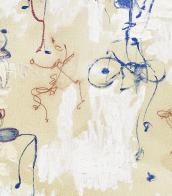

Mark Flood is an American artist.
Flood has worked in several media and formats such as painting, installation, artist's books and photo-collage. His paintings created with lace have been called "spinster abstraction". The process involves collecting lace and shredding it, soaking the lace in paint, and then draping it over a painted canvas. A pattern is left on the canvas after removing the lace.
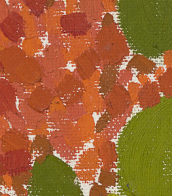

Mark Flood is an American artist.
Flood has worked in several media and formats such as painting, installation, artist's books and photo-collage. His paintings created with lace have been called "spinster abstraction". The process involves collecting lace and shredding it, soaking the lace in paint, and then draping it over a painted canvas. A pattern is left on the canvas after removing the lace.
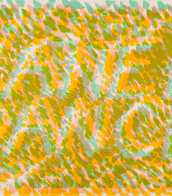
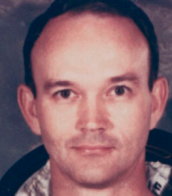
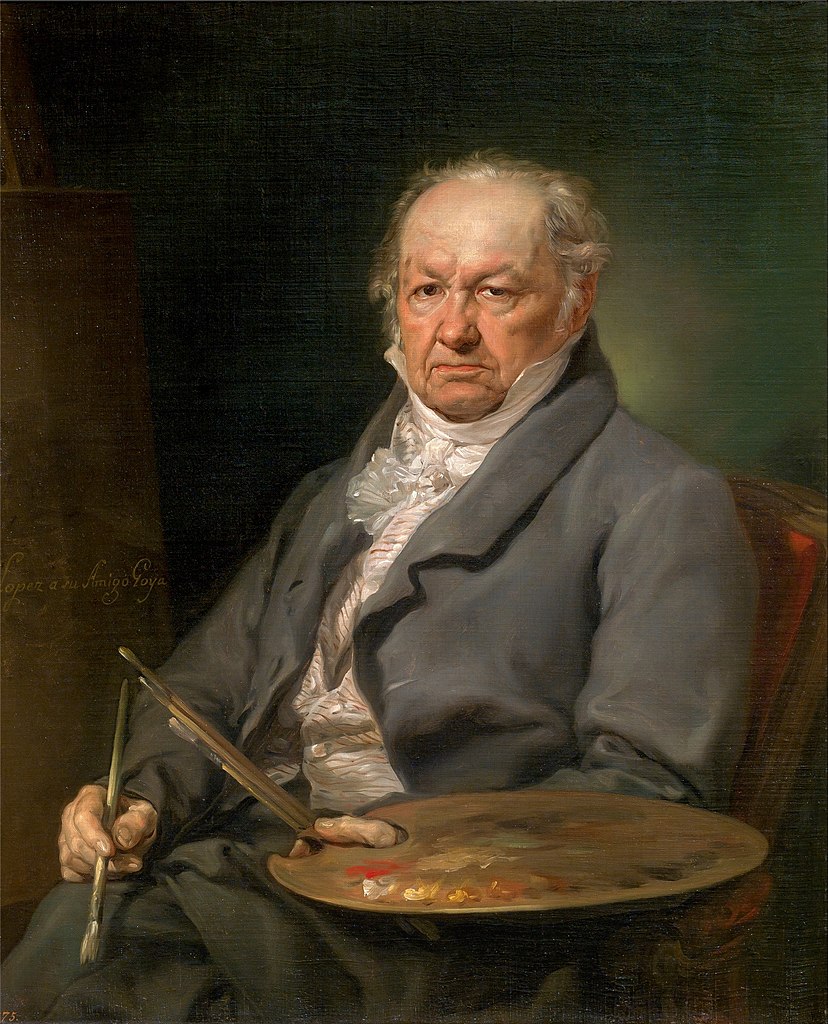
Francisco José de Goya y Lucientes was a Spanish romantic painter and printmaker, celebrated as the most pivotal Spanish artist of the late 18th and early 19th centuries. Born in Fuendetodos, Aragon, Spain, on March 30, 1746, Goya's work reflects a tumultuous period of history, intertwining the personal, political, and social upheavals of his time with a bold and innovative artistic vision. His early career was marked by portraits of the Spanish aristocracy and royalty, as well as Rococo style tapestry cartoons for the royal palace. However, following a severe illness in 1793 that left him deaf, his art took on a darker and more pessimistic tone.
Goya's oeuvre is vast, encompassing around 700 paintings, 280 prints, and several thousand drawings, through which he depicted a wide range of subjects from the whimsical to the macabre. Notable among his works are "The Naked Maja," "The Clothed Maja," "The Family of Charles IV," "The Third of May 1808: The Execution of the Defenders of Madrid," and "Saturn Eating His Children." His etchings, particularly the series "Los Caprichos" and "The Disasters of War," are celebrated for their intricate detail, emotional depth, and critical social commentary.
Goya's contribution to art goes beyond his mastery of painting and printmaking. He is often considered the bridge between the Old Masters and modern art, introducing themes and techniques that would influence countless artists in the centuries to follow. His ability to capture the essence of his era, the human condition, and the complexities of his own psyche, makes his work universally relatable and enduringly relevant.
His most famous paintings are housed in prestigious museums worldwide, including the Museo del Prado in Madrid, which holds an extensive collection of his works. The Prado's collection serves as a testament to Goya's significant impact on art and culture, offering insight into the artist's unique perspective on the world around him.
For collectors and experts in art and antiques, Francisco de Goya's legacy is a beacon of artistic innovation and historical significance. His works not only adorn the walls of museums but also continue to inspire and provoke thought among audiences across the globe.
For updates related to Francisco de Goya, including new product sales and auction events related to his works, sign up for our newsletter. Stay informed on the latest offerings and opportunities to add to your collection of this legendary artist's works.


Sigmar Polke was a German painter and photographer.
Polke experimented with a wide range of styles, subject matters and materials. In the 1970s, he concentrated on photography, returning to paint in the 1980s, when he produced abstract works created by chance through chemical reactions between paint and other products. In the last 20 years of his life, he produced paintings focused on historical events and perceptions of them.



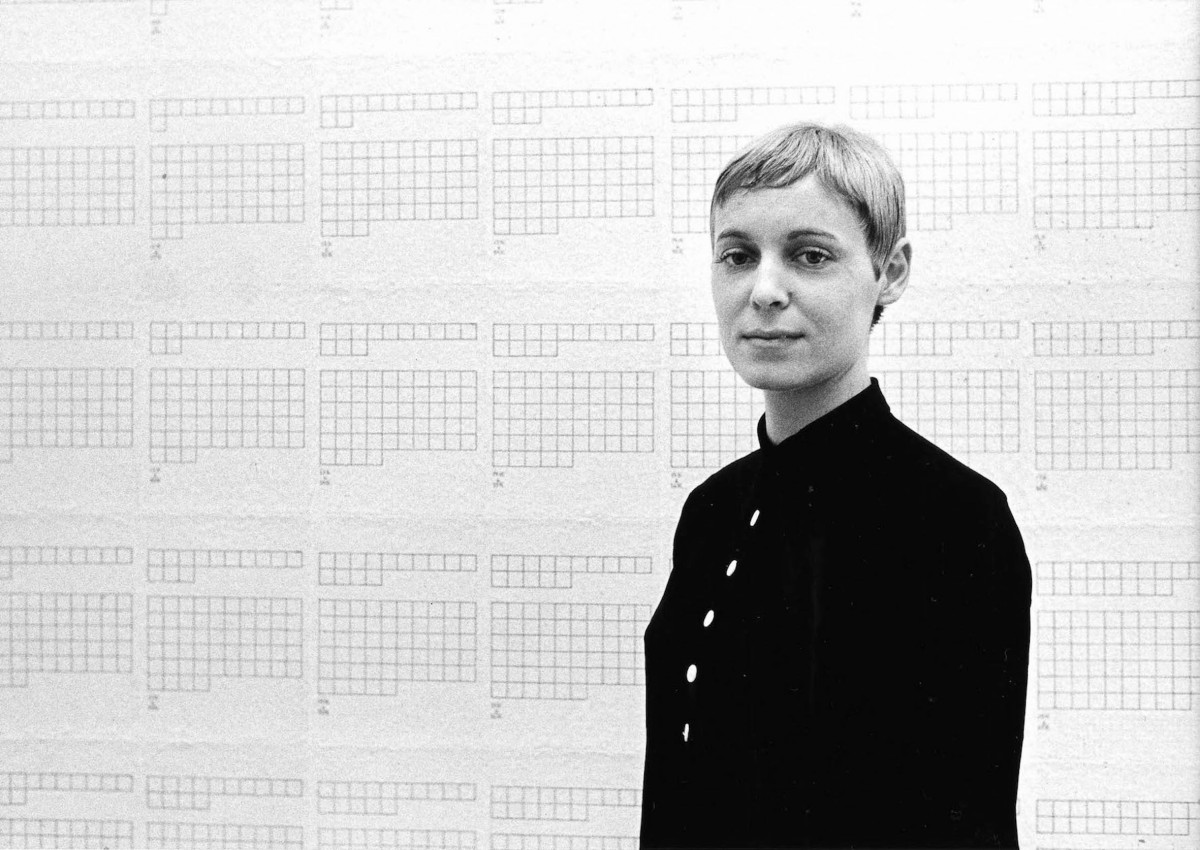
Hanne Darboven was a German conceptual artist known for her large-scale installations, drawings, and writings that explore the intersections of mathematics, language, and time.
Darboven studied at the Hochschule für Bildende Künste in Hamburg. In the 1960s, she became associated with the Conceptual Art movement, creating works that often involved systems of numerical and textual notation.
In the 1970s, Darboven began to produce her signature installations, which combined writing, drawing, and found objects to create immersive environments that explored complex systems of meaning and structure. One of her most famous works is "Kulturgeschichte 1880-1983", a monumental installation consisting of 1,590 framed sheets of paper, each containing a series of numbers, letters, and symbols that chart the course of modern history.
Throughout her career, Darboven continued to explore the relationship between language, numbers, and time, often drawing inspiration from her own life and experiences. She exhibited her work widely in Europe and the United States, and was the subject of numerous retrospectives and solo exhibitions.
Her legacy as a pioneering conceptual artist continues to be recognized and celebrated by the art world today.
.

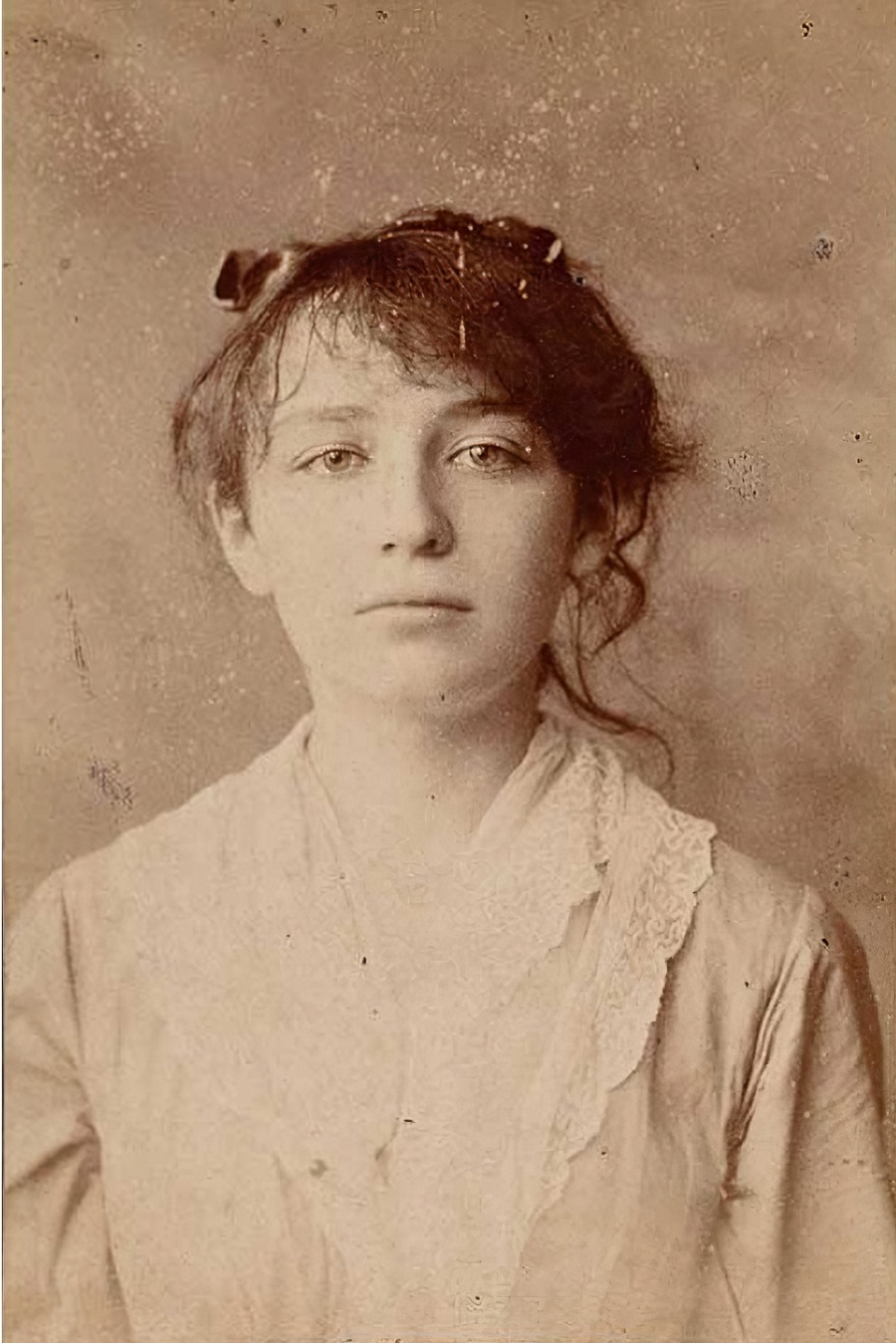
Camille Claudel was a French sculptor. She is known for her powerful and emotionally charged sculptures, which often portrayed human figures in moments of intense emotion or turmoil.
Claudel studied art in Paris under the tutelage of Auguste Rodin, and the two became lovers and collaborators for several years. Her work was heavily influenced by Rodin's style, and she often portrayed human bodies with a sense of fluidity and movement that was characteristic of his work.
Claudel's sculptures were praised for their technical skill and emotional intensity, but she struggled to gain recognition as an artist in her own right. She was frequently dismissed as simply a student of Rodin, and her personal life was marked by a series of setbacks and tragedies.
In 1913, Claudel suffered a nervous breakdown and was committed to a mental institution by her family, where she remained for the rest of her life. Her work was largely forgotten until the late 20th century, when a renewed interest in her life and career led to a reassessment of her place in the history of modern art. Today, her sculptures are celebrated for their technical virtuosity and emotional power, and her story has become an inspiration to many artists and scholars.

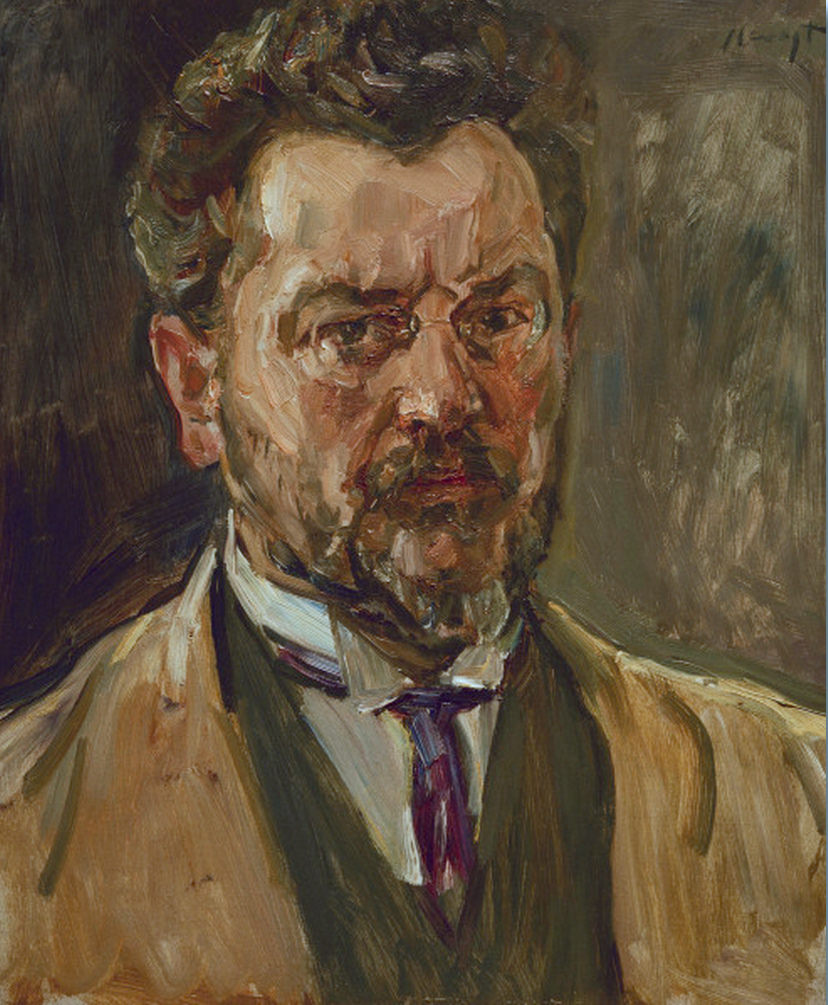
Max Slefogt was a German Impressionist painter and illustrator, best known for his landscapes. He was, together with Lovis Corinth and Max Liebermann, one of the foremost representatives in Germany of the plein air style.
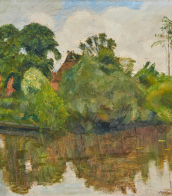
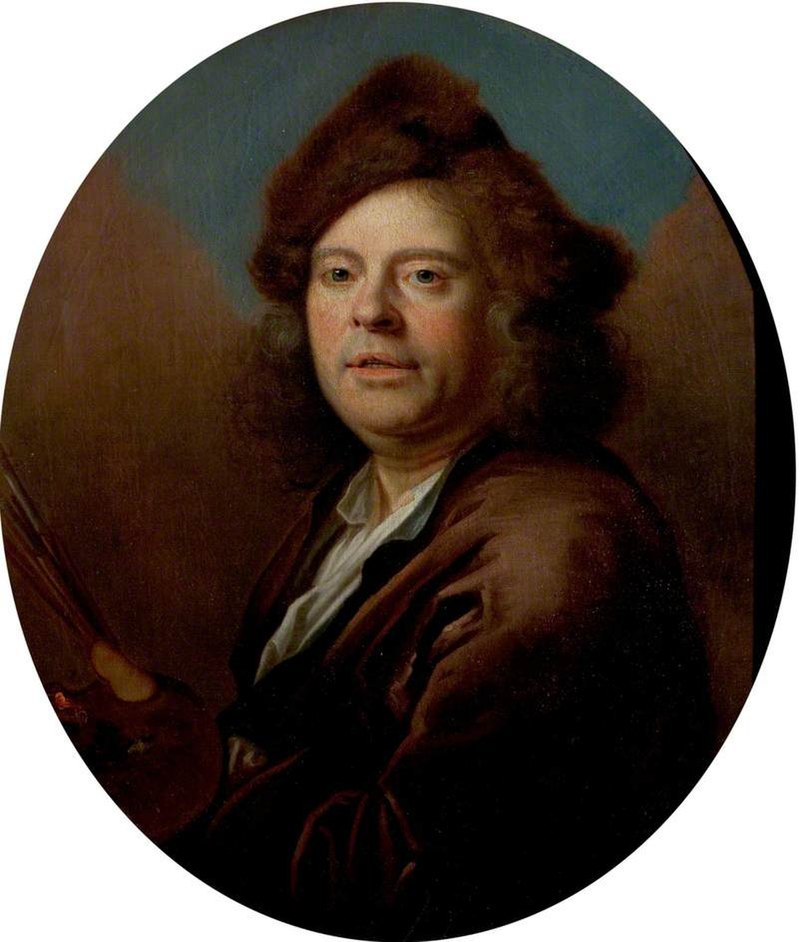
Jan Siberechts was a Flemish landscape painter whose career spanned both his native land and England. Initially, Siberechts developed a personal style of landscape painting in Antwerp, emphasizing Flemish countryside and country life. His work was influenced by Dutch Italianate landscape painters such as Nicolaes Berchem and Karel Dujardin, reflecting a blend of local and Italianate elements. This phase of his career was marked by vivid depictions of the Flemish rural life, with robust country girls in bright attire becoming a signature motif of his paintings.
Siberechts moved to England around 1672, where he significantly contributed to the English landscape tradition. In England, he painted decorations for the Duke's Cliveden House and later, traveled extensively, completing commissions for aristocratic clients. His English landscapes maintained their Flemish character but also started to focus more on universal themes, with less emphasis on figures and more on the scenery itself. These works are characterized by powerful trees, soft light on distant hills, and a relatively dark foreground to highlight the illuminated vistas in the background.
Siberechts is credited as the 'father of British landscape' for his pioneering country house portraits, blending detailed naturalistic views of stately homes into atmospheric landscapes. This innovative approach had a lasting influence on English landscape painting. His work, such as the views of Longleat and the Belsize Estate, represents an important step in the development of topographical painting, merging Flemish influences with the emerging English landscape tradition.
For collectors and experts in art and antiques, Siberechts' oeuvre offers a unique window into the transnational flow of artistic ideas in the 17th century, blending Flemish traditions with the nascent English landscape genre. His paintings, celebrated for their detail and historical topographical interest, can be found in prestigious collections such as the Tate Gallery London and the Victoria and Albert Museum.
For updates on exhibitions, sales, and auction events related to Jan Siberechts' work, art enthusiasts are encouraged to sign up for dedicated newsletters. This ensures that they remain informed about the latest opportunities to explore and appreciate the contributions of this influential Flemish artist to the landscape painting genre.


Marc Chagall (Russian: Марк Заха́рович Шага́л), born Moishe Shagal in 1887 near Vitebsk, Belarus (then part of the Russian Empire), was a Belarusian and French artist celebrated for his pivotal role in the avant-garde movement and his unique integration of Eastern European Jewish culture into modern art. His contributions spanned several artistic formats including painting, stained glass, stage sets, ceramics, tapestries, and fine art prints. Chagall's early modernist tendencies were enriched by his experiences across Saint Petersburg, Paris, and Berlin before World War I, leading to a distinctive style that melded Cubism, Symbolism, and Fauvism with his Jewish heritage.
Chagall's work is recognized for its emotional depth, often exploring themes of love, memory, and Jewish folklore through vibrant colors and dreamlike imagery. Notably, art critic Robert Hughes described him as "the quintessential Jewish artist of the twentieth century," a sentiment echoed by art historian Michael J. Lewis who regarded Chagall as a significant figure within European modernism and as the world's preeminent Jewish artist of his time.
Among Chagall's famed contributions are his stained-glass windows for the cathedrals of Reims and Metz, the UN, and the Jerusalem Windows in Israel. His monumental paintings include parts of the ceiling of the Paris Opéra and works that explore biblical themes, a hallmark of his oeuvre that underscores his enduring engagement with spiritual and religious motifs.
For art collectors and antiques experts, Chagall's works are notable not only for their artistic innovation but also for their rich cultural and historical significance. His art is housed in many prestigious museums worldwide, including the Marc Chagall National Museum in Nice, France, which focuses on his works inspired by religion and houses the series of paintings illustrating the biblical message.
For those interested in exploring Chagall's legacy and the vibrant intersection of culture, art, and history his work represents, signing up for updates on new product sales and auction events related to Marc Chagall can provide invaluable insights and opportunities. This is an invitation to engage more deeply with the world of art and culture that Chagall so uniquely encapsulated in his work.


Lovis Corinth was a German artist and writer whose mature work as a painter and printmaker realized a synthesis of impressionism and expressionism.
Corinth studied in Paris and Munich, joined the Berlin Secession group, later succeeding Max Liebermann as the group's president. His early work was naturalistic in approach. Corinth was initially antagonistic towards the expressionist movement, but after a stroke in 1911 his style loosened and took on many expressionistic qualities. His use of color became more vibrant, and he created portraits and landscapes of extraordinary vitality and power. Corinth's subject matter also included nudes and biblical scenes.

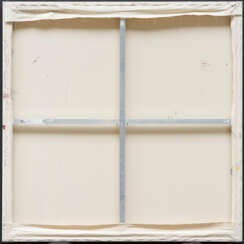

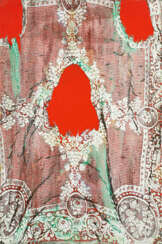

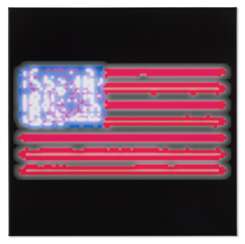

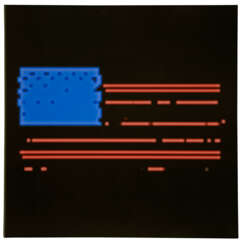



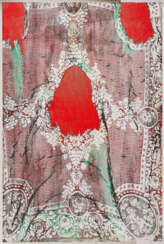



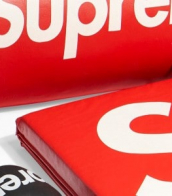
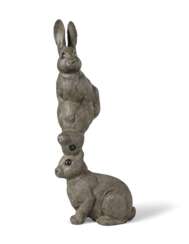

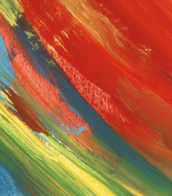



![The LM returning from the lunar surface; telephoto panorama [Mosaic] over farside highlands near King Crater; the Command Module’s floodlight, April 16-27, 1972](/assets/image/picture_1221270/26c70/5ef4e32773a01f7a666c1b6f6751aeab1604656800jpg__fix_374_244.jpeg)
![The LM returning from the lunar surface; telephoto panorama [Mosaic] over farside highlands near King Crater; the Command Module’s floodlight, April 16-27, 1972](https://veryimportantlot.com/assets/image/picture_1221270/26c70/5ef4e32773a01f7a666c1b6f6751aeab1604656800jpg__fix_374_244.jpeg)
